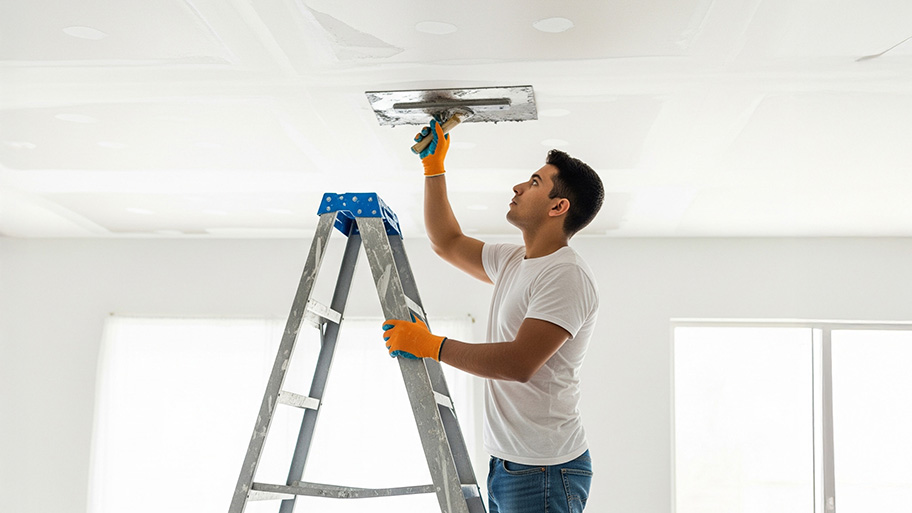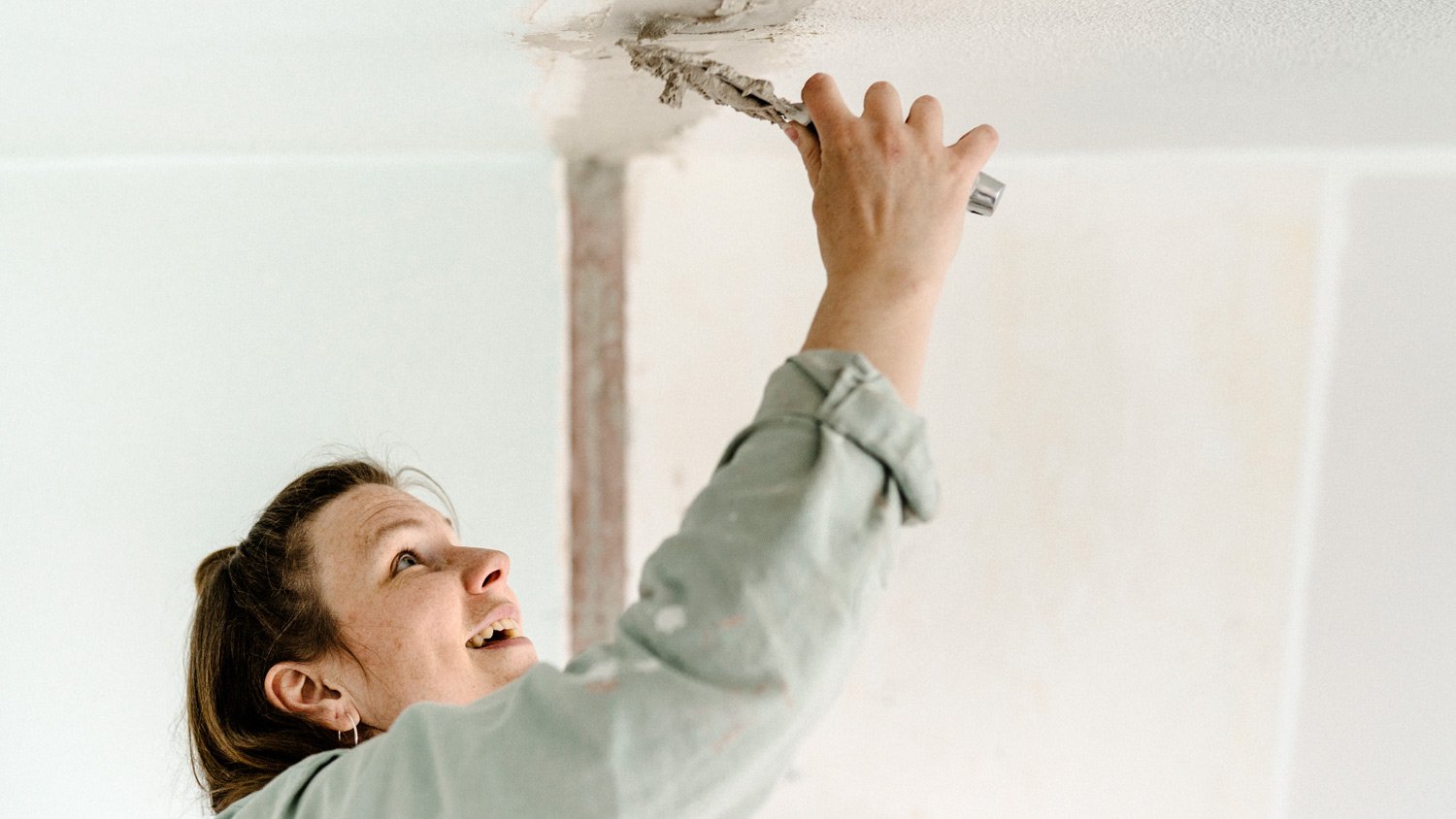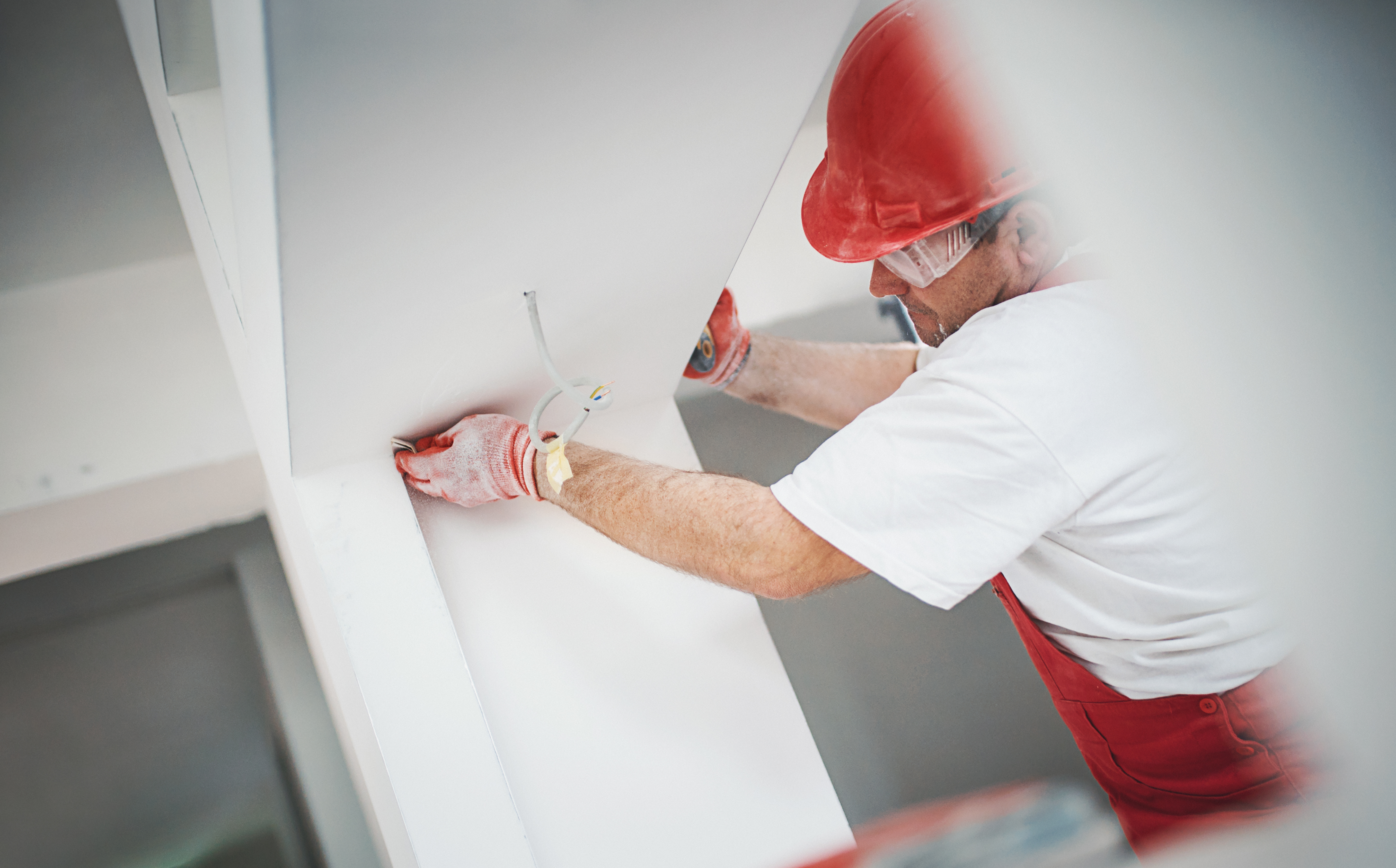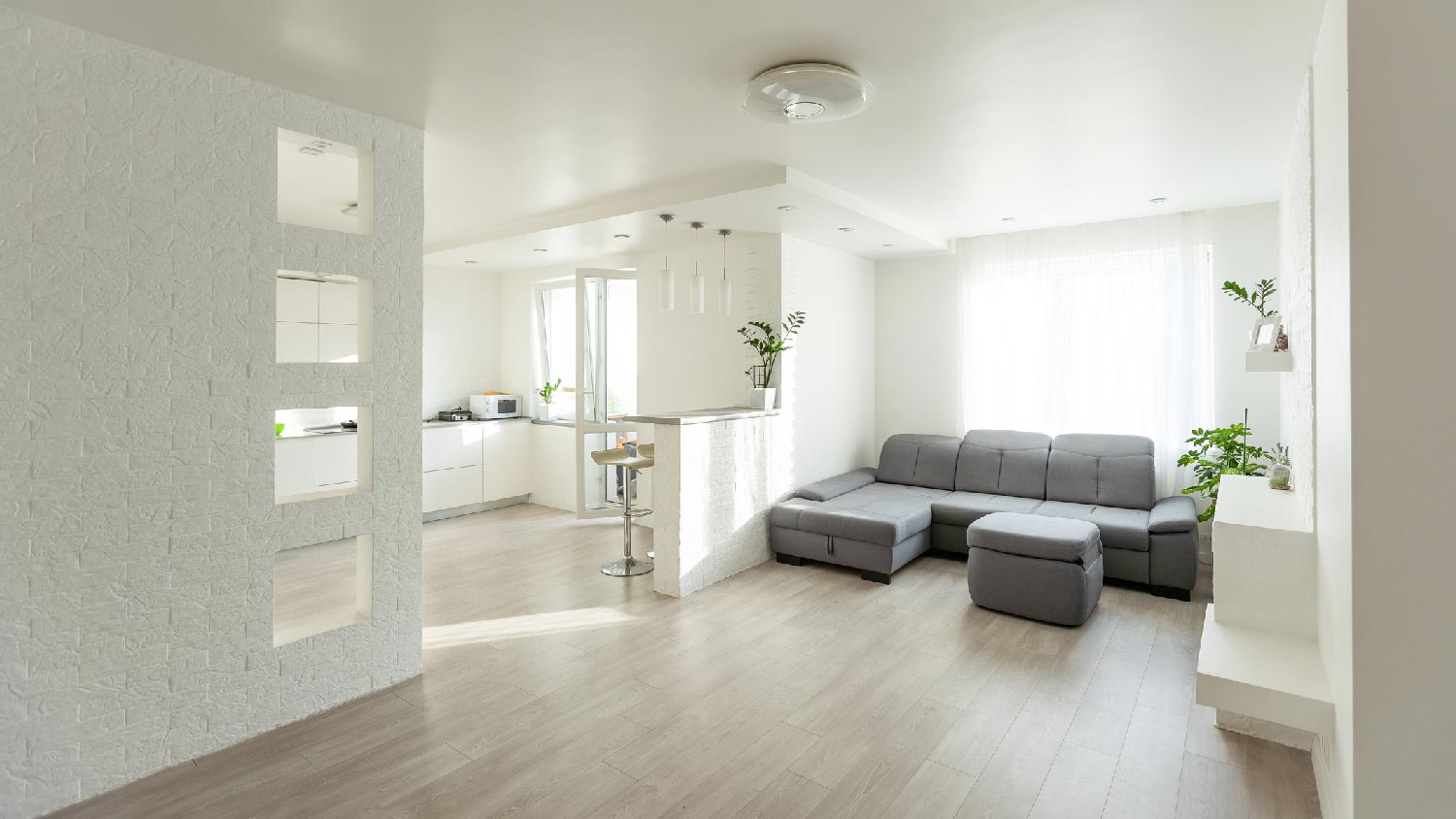
The eye-catching character of a coffered ceiling can really set your room design apart. This guide breaks down coffered ceiling costs to help you budget.
Drop ceiling cost averages $2,198, with most homeowners paying between $1,076 and $3,330 on average. Your price depends on room size, drop ceiling type, and labor rates.


Drop ceiling costs depend on ceiling size, material type, labor, and add-on features.
Budget $9 to $13 per square foot for installing a new drop ceiling
Professional installation costs $2 to $5 per square foot and ensures a level, long-lasting finish.
Custom tiles, lighting, and insulation can increase your total cost.
Drop ceilings can improve acoustics and update your space’s look.
This article was created using automation technology and thoroughly fact-checked and edited by an Angi Editor in accordance with our AI policy.
Drop ceiling cost averages $2,198 nationwide, with most homeowners spending between $1,076 and $3,330 for installation on average. The cost for a standard installation ranges from $9 to $13 per square foot, depending on the material and complexity. Factors like room size, tile material, and labor rates will affect your final price.
A drop ceiling offers a practical and attractive solution for hiding wiring, ductwork, and plumbing while enhancing a room’s acoustics and appearance. In this guide, we’ll cover what influences drop ceiling cost, help you anticipate your budget, and explain your options.
Several factors influence the final drop ceiling cost, from ceiling size to type, labor, permits, and custom features. Here’s a closer look at how your total breaks down.
Room size is a leading factor in determining your total drop ceiling cost. Including professional labor and materials, a standard installation costs between $9 and $13 per square foot on average, but can reach up to $28 per square foot for high-end materials, add-ons, and insulation. The larger the area, the more materials and labor you’ll need, which increases your project price.
Most drop ceilings are installed in basements, offices, or kitchens, but can be added to nearly any room. Small bedrooms are on the lower end of the cost spectrum, while large basements or commercial spaces can push your budget higher. Ceiling height and room shape also play a role—vaulted or irregular ceilings require more planning and labor.
| Room Size (Sq. Ft.) | Description | Average Cost |
|---|---|---|
| 100 | Small bedroom | $900–$1,300 |
| 250 | Home office | $2,250–$3,250 |
| 500 | Large basement | $4,500–$6,500 |
| 1,000 | Commercial space | $9,000–$13,000 |

How much you’ll pay for your drop ceiling largely depends on the tile material you choose. Here’s a closer look at your drop ceiling tile material options and their average costs.
| Tile Material | Average Cost |
|---|---|
| Fiberboard | $1–$7 |
| Black acoustic | $2–$7 |
| Plastic | $5–$9 |
| Metal | $12–$20 |
| Wood | $10–$70 |
Where you live affects both material and labor costs for your drop ceiling project. Urban areas and regions with higher living costs tend to see higher installation rates, while rural or low-demand areas may be less expensive. Local supply, demand, climate, and building codes can also play a role. For example, coastal areas may require moisture-resistant tiles, while cold climates may need extra insulation.
In addition, the room where you plan to install the drop ceiling can affect your costs. Basements and offices are straightforward, but kitchens, bathrooms, or rooms with obstacles (such as ductwork or beams) may require extra materials and labor. Multi-room or whole-home installations are more costly, but may qualify you for bulk discounts.
Drop ceilings are installed by general contractors, handypeople, or ceiling specialists. Labor rates range from $2 to $5 per square foot or $40 to $100 per hour, depending on your region and the pro’s experience.
Minimum service fees apply to small projects, so even a single room may have a base charge. Complex projects with high ceilings, obstacles, or unusual layouts can increase labor costs. Labor charges usually include installation, finishing, and site cleanup.
Some municipalities require permits for drop ceiling installation, especially if electrical or HVAC work is involved. Permit costs range from $50 to $300, depending on your location. Permit requirements may extend your project timeline and add to your budget. Contractors usually handle permits, but clarify this before work begins.
Adding features like integrated lighting, HVAC vents, or speakers increases your overall drop ceiling cost. Light tiles can add $20 to $50 each, while specialty tiles—such as decorative, moisture-resistant, or fire-rated panels—cost more per square foot. Insulation or soundproofing upgrades increase both material and labor costs. Custom grid colors and patterns, or removable panels for easy access, also raise your price.
Project complexity is a key factor—irregular shapes, tight spaces, or multiple levels take more time and skill. Accessibility issues, such as high ceilings or limited entry, can make the job harder and more expensive.
Site preparation, including removing an old ceiling, debris disposal, and delivery fees, adds to your cost. Post-construction cleanup and any needed repairs or restoration may also be extra. If you want a custom design, expect to pay for design or consultation fees. Some areas require inspections, which can incur additional charges.
Beyond installation, it’s smart to plan for ongoing and hidden costs.
Many manufacturers and installers offer warranties on drop ceilings, covering materials, labor, or defects. Standard warranties last one to 10 years, but terms and coverage vary. Extended warranties are available for an extra fee and may be a good investment for larger projects or high-end materials.
A drop ceiling can change your heating or cooling efficiency by reducing room height, potentially lowering energy costs. However, ongoing costs for lighting or integrated systems should be considered. If you add specialty lighting or sound systems, expect higher electricity bills.
Routine cleaning is simple—just dust or wipe tiles and grids. Replacing damaged or stained tiles costs $2 to $15 per tile, depending on the material. Over time, you may need to repaint grids or replace sagging panels. Maintenance needs and costs vary by material, with mineral fiber requiring more frequent replacement than PVC or metal tiles.
Sales tax on materials and labor can add 5% to 10% to your total drop ceiling cost, depending on your local tax rate.
Homeowners insurance usually does not cover drop ceiling installation, but it may cover repairs if damage is caused by a covered event (like a pipe burst). Upgrading to a safer or fire-rated ceiling could reduce your insurance premium. Always check that your contractor carries proper liability insurance to protect your home during installation.
Some homeowners choose to install a drop ceiling themselves to save on labor costs. Here’s what to expect.
DIYers pay only for materials—usually $2 to $8 per square foot for standard tiles and grids. You’ll need tools such as ladders, grid cutters, and safety gear, which can cost $100 to $300 if you don’t already own them. Plan to spend several days on the project, depending on the room size and your experience. Installing a drop ceiling requires careful measuring, cutting, and leveling. Risks include improper installation, safety hazards, and voided warranties if mistakes are made.
DIY installation can save 30% to 50% on labor, but hiring a pro is best for complex layouts, high ceilings, or specialty features. Professional installation ensures a level, durable result and often comes with a warranty. Consider your skill level, time, and the value of a professional finish before deciding.

If your drop ceiling is damaged, you’ll need to decide whether to repair or replace it. Common issues include water stains, sagging tiles, or rusted grids. Repairing a few tiles or grid sections is cost-effective if the rest of the ceiling is in good condition.
If your ceiling is old, has widespread damage, or is out of warranty, full replacement is a better investment. Use the 50% rule: if repair costs approach half the price of replacement, opt for a new ceiling.
Installing a drop ceiling can improve the look of your space, however it doesn’t have a significant ROI. Potential buyers appreciate tidy, accessible ceilings that hide mechanical systems and improve acoustics. Compared to drywall or coffered ceilings, drop ceilings offer better accessibility for repairs and upgrades, though they may not have the same premium aesthetic. ROI depends on your material choices, soundproofing, and the room’s visibility.
Let’s look at ways to keep your drop ceiling cost manageable:
Choose budget-friendly tile and grid materials for less visible areas.
Install a drop ceiling in open, accessible rooms to reduce labor time.
Limit custom features and specialty tiles to high-traffic or visible spaces.
Purchase materials in bulk for larger projects to unlock volume discounts.
Get multiple quotes from local drop ceiling installation pros to compare pricing and services.
Schedule installation during off-peak times for potential discounts.
Home is the most important place on earth, which is why Angi has helped more than 150 million homeowners transform their houses into homes they adore. To help homeowners with their next project, Angi provides readers with the most accurate cost data and upholds strict editorial standards. We extensively research project costs to develop the pricing data you see, so you can make the best decisions for you and your home. We rely on reputable sources, including the U.S. Bureau of Labor Statistics, academic journals, market studies, and interviews with industry experts—all to ensure our prices reflect real-world projects.
Want to help us improve our cost data? Send us a recent project quote to [email protected]. Quotes and personal information will not be shared publicly.
From average costs to expert advice, get all the answers you need to get your job done.

The eye-catching character of a coffered ceiling can really set your room design apart. This guide breaks down coffered ceiling costs to help you budget.

A ceiling repair averages about $1,000, but multiple factors affect this number. Learn more about creating an accurate ceiling repair cost estimate with our tips.

Venetian plaster can add depth and texture to your aesthetic. Learn how much Venetian plaster costs based on factors like square footage and whether you hire a pro to help.

Know these major warning signs of ceiling collapse and stay proactive so you can intervene and repair before it is too late.

Can you sand plaster? Technically, yes, but between a big mess and potential health hazards, this is one project you’ll want to hire a pro for.

Find out what causes ceiling cracks, including general wear and tear, water damage, roof truss uplift, and issues with your foundation.